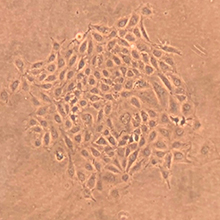Mitarbeitende
Nicole Okoniewski


[[ element.title ]]
Projekte
[[ element.title ]]
[[ element.title ]]
Publikationen
[[item.title]]
Kienle, C., Bramaz, N., Schifferli, A., Vivien, R., Vermeirssen, E., Ferrari, B., … Langer, M. (2024). Effektbasierte Wirkungskontrolle der Dünnern vor und nach Ausbau der ARA Falkenstein – Untersuchungen vor Ausbau. Dübendorf: Centre Ecotox/Oekotoxzentrum Eawag-EPFL, Schweizerisches Zentrum für angewandte Ökotoxikologie. , Institutional Repository
Krysenko, S., Okoniewski, N., Nentwich, M., Matthews, A., Bäuerle, M., Zinser, A., … Wohlleben, W. (2022). A second gamma-glutamylpolyamine synthetase, GlnA2, is involved in polyamine catabolism in Streptomyces coelicolor. International Journal of Molecular Sciences, 23(7), 3752 (23 pp.). doi:10.3390/ijms23073752, Institutional Repository
Zoppo, M., Okoniewski, N., Pantelyushin, S., vom Berg, J., & Schirmer, K. (2021). A ribonucleoprotein transfection strategy for CRISPR/Cas9‐mediated gene editing and single cell cloning in rainbow trout cells. Cell and Bioscience, 11(1), 103 (15 pp.). doi:10.1186/s13578-021-00618-0, Institutional Repository
[[ element.title ]]
[[ element.title ]]
Adresse
| E-Mail: | nicole.okoniewski@cluttereawag.ch |
| Telefon: | +41 58 765 5434 |
| Fax: | +41 58 765 5802 |
| Adresse: | Eawag
Überlandstrasse 133 8600 Dübendorf |
| Büro: | BU E11 |

